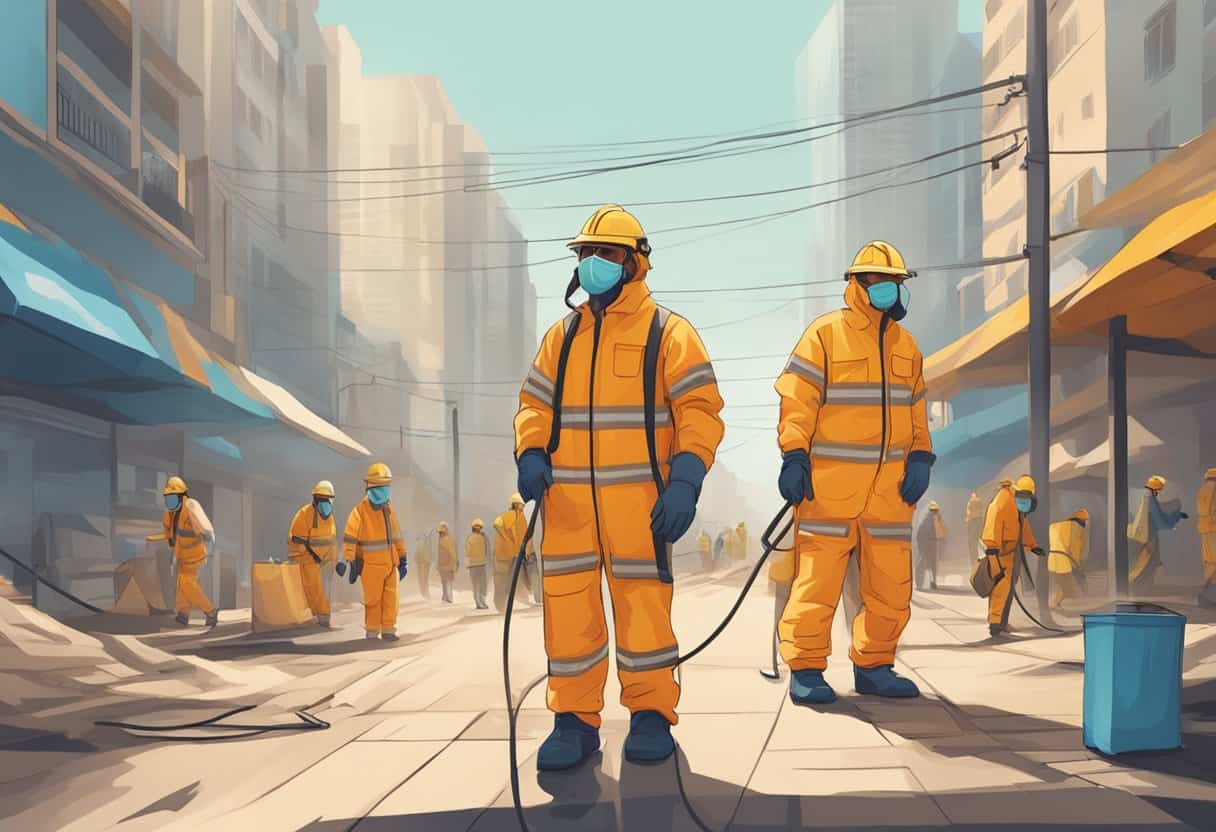Understanding the climate patterns of the hottest cities in the US can be crucial for a variety of reasons, from planning your next move or vacation to preparing for the implications of urban heat islands.
Various factors contribute to these elevated temperatures, including geographic location, urban development, and prevailing climatic conditions. These cities often share common attributes such as higher average annual temperatures and frequent high-temperature days throughout the year.
In coping with the heat, there are health and safety considerations to be mindful of, especially during peak temperature periods. Taking precautions is essential to mitigate the risks of heat-related illnesses. Despite the challenges, there are effective strategies you can employ to remain cool and safe even when the mercury soars.
Learning about the hottest cities can also lead to a deeper understanding of climate trends and the need for sustainable urban planning to combat excessive heat.
Phoenix, Las Vegas, and Austin rank among the US’s hottest cities, with Phoenix leading with 111 days above 100°F. These cities face significant health and safety challenges due to extreme heat.
Top Hottest Cities in the US
When you think of heat in the U.S., certain cities stand out for their soaring temperatures, particularly during the intense summer months influenced by their proximity to the Gulf of Mexico and other factors that contribute to extreme heat.
Texas Hotspots
In Texas, cities like Houston, San Antonio, Austin, and Brownsville consistently experience some of the highest temperatures in the country. Houston and San Antonio, for example, often reach the high 90s in summer months.
Arizona Heat Centers
Arizona is notorious for its scorching heat, with Phoenix, Tucson, and Yuma regularly topping the charts. Phoenix is particularly well-known for hitting triple-digit temperatures, which are a staple of its long, hot summers.
Florida’s Warm Locales
Florida offers more than just sunshine; cities like Miami, Orlando, and Tampa showcase the state’s warm climate. Miami’s close proximity to the Gulf of Mexico contributes to its steaming hot summers, with temperatures regularly in the high 80s.
California Warmth
Over in California, cities such as Fresno and Riverside are known for their warmth. These inland cities lack the coastal breezes present in other parts of the state, resulting in higher summer temperatures.
Other Notable Cities
Other cities that are known for their heat include Las Vegas, Nevada, a desert metropolis with extreme summer heat, and Honolulu, Hawaii, which, while tropical, can also get quite warm. New Orleans, near the Gulf of Mexico, often experiences high humidity combined with heat.
Key West: A Unique Case
Key West in Florida presents a unique case; being the southernmost point in the U.S., it experiences a tropical climate that includes both warm temperatures and high humidity year-round.
Miami: A Case Study
Taking Miami, Florida as a case study, one can see the combined effects of latitude, ocean currents, and urban heat contributing to its consistently high temperatures especially in the summer months, often making it one of the hottest cities in the U.S.
Climate Data and Trends
In this section, you’ll get a clear view of the climate data you need to understand the nation’s temperature landscape, including the recorded heat trends over time and a detailed month-by-month analysis of temperature variations.
Understanding Climate Data
When you look at climate data, it’s crucial to consider the daily average temperature which gives you a snapshot of a typical day, as well as the daily mean temperature that averages high and low temperatures throughout a day. Also, factors like the urban heat island effect come into play, where cities can become significantly warmer than their rural counterparts due to human activities.
Heat Trends Over Time
The record highest temperatures give you insight into how extreme the heat can get in the hottest city in the United States. Historical data has shown not just occasional spikes in temperature, but a trend towards more frequent heat waves. These patterns underline the fact that many cities experience hot summers and, increasingly, warm winters.
Month by Month Analysis
To understand the full scope of temperature trends, examine the climate data month by month:
- January: Typically the coldest month, yet recent data reveal less of a temperature dip than in previous decades.
- July: Often spotlighting the peak of high temperatures annually, July’s data underscores the intensity of urban hot summers.
- December: A month that has historically hinted at warm winters with temperatures steadily climbing over the years.
Remember, factors like geographic location and elevation play significant roles in determining the climate profile of a city, including its propensity to tip the scales as the hottest or experience dramatic temperature ranges throughout the year.
Health and Safety in High Temperatures

During extreme heat events, the risk of heat-related illnesses rises significantly. Understanding how to recognize symptoms and prepare safety measures is critical to safeguard your health.
Recognizing Heat-Related Illnesses
Heat exhaustion and heat stroke are serious conditions caused by the body’s inability to cool down properly. Warning signs of heat exhaustion include heavy sweating, weakness, and clammy skin, while heat stroke symptoms escalate to high body temperatures, rapid pulse, and possible unconsciousness. If you recognize these symptoms in yourself or someone else during outdoor activities in high temperatures, it is imperative to act immediately.
Safety Measures and Preparedness
To beat the heat, the Department of Homeland Security advises staying informed about the weather-related hazard and preparing for high temperatures. Here are key strategies:
- Stay Hydrated: Drink plenty of fluids, even if you don’t feel thirsty. Avoid alcoholic or caffeinated beverages that can dehydrate you.
- Stay Informed: Be aware of heat advisories or warnings and plan your outdoor activities accordingly.
- Stay Cool: Use air conditioning, take cool showers, and wear loose, lightweight clothing.
- Plan Around the Heat: Schedule intense activities during cooler times of the day and take breaks in shaded areas.
Remember, extreme heat can be more hazardous than hurricanes in terms of deaths annually. Therefore, taking proactive steps is essential for your safety.
Coping Strategies for Extreme Heat
As temperatures soar, it’s crucial to have practical strategies to stay cool. In the hottest cities in the US, effectively managing heat is a matter of health and safety.
Cooling Centers and Local Resources
Your city might offer cooling centers–air-conditioned public spaces where you can escape the heat during the hottest parts of the day. These centers are often set up in community centers, libraries, and schools. To maximize their benefits, cities like Philadelphia have implemented systems to reduce peak electricity demand during heat extremes, highlighting the importance of community-wide cooperation to manage extreme heat.
- Check local resources: Always stay informed about your city’s response plans and locate the nearest cooling center.
- Stay connected: Use local hotlines or apps to receive heat alerts and advice on how to stay cool.
Home Cooling Solutions
In your home, there are several ways to beat the heat without relying solely on air conditioning, which can be costly and energy-intensive.
- Optimize your fans: Place box fans facing out of your windows to push hot air out and adjust ceiling fan settings to run counter-clockwise, which pulls hot air up and out.
- Seal your home: Seal any gaps in windows and doors to prevent warm air from entering and cool air from escaping.
- Use heat-blocking curtains: Thermal or blackout curtains can significantly lower indoor temperatures by blocking sun rays.
- Hydration is key: Drink plenty of water to maintain hydration as your body cools itself through sweating.
Implementing these home solutions will help maintain a cooler indoor environment, allowing you to withstand high temperatures with greater comfort and safety.
Frequently Asked Questions
In this section, you’ll find specific answers to common queries about the hottest cities in the United States based on climate data and temperature records.
Which city in the United States typically experiences the highest summer temperatures?
Death Valley, California, is known for having the highest summer temperatures in the United States, where the mercury can soar to life-threatening levels.
Which American city has the greatest number of days exceeding 100°F?
Phoenix, Arizona, often tops the charts with the most days exceeding 100°F, reflecting its desert climate’s intense heat.
What are the average high temperatures in the top 10 hottest U.S. cities during peak summer months?
During peak summer months, cities like Las Vegas, Tucson, and El Paso see average high temperatures ranging from 100°F to 110°F, with slight variations each year.
How does the heat index vary among the hottest U.S. cities?
The heat index, which factors in humidity, can make places like Houston and Miami feel hotter than their actual temperatures, often exceeding a heat index value of 100°F.
During the winter months, which U.S. cities maintain the warmest temperatures?
Cities such as Miami, Florida, and Honolulu, Hawaii, typically enjoy the warmest temperatures in winter, rarely dipping below the mid-60s°F.
Based on recent data, which cities in the United States recorded the highest temperatures in 2023?
Records from 2023 indicate that Furnace Creek in Death Valley hit extreme highs, while cities like Phoenix and Las Vegas also recorded some of the highest temperatures.







